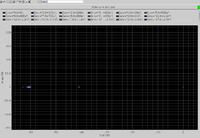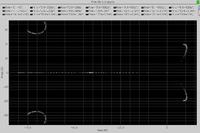LvW
Advanced Member level 6
Re: Loop stability
As FvM has already proposed, it would be really helpful (more correct: necessary) to see a block diagram which represents your circuitry. This also would be of great value for you to understand the function of the circuit.
Only from such a block diagram you are able to decide which loop (if there are more than one) governs the behaviour of the whole system.
FvM said:Can you also give an equivalent circuit of the loop structure, not considering transistors, just the gain blocks, respectively control process/controller. This would allow to assign the gain simulations and understand their meaning within the system.
As FvM has already proposed, it would be really helpful (more correct: necessary) to see a block diagram which represents your circuitry. This also would be of great value for you to understand the function of the circuit.
Only from such a block diagram you are able to decide which loop (if there are more than one) governs the behaviour of the whole system.

